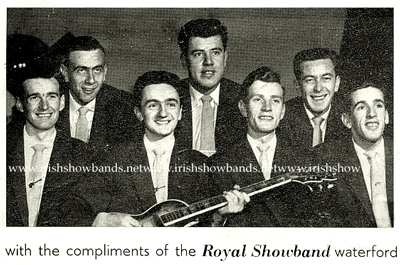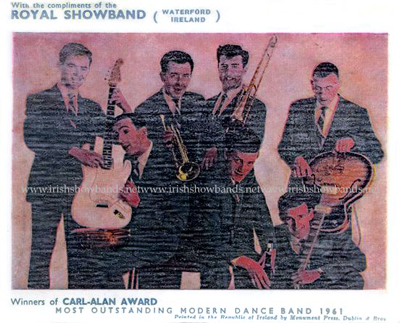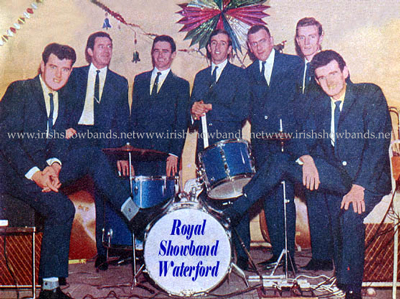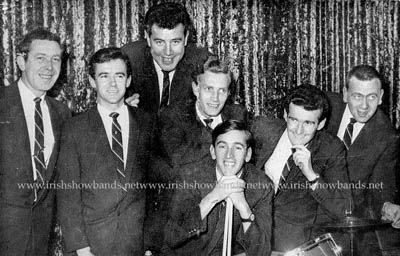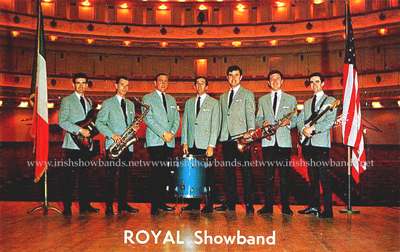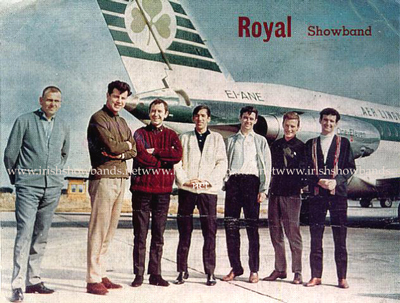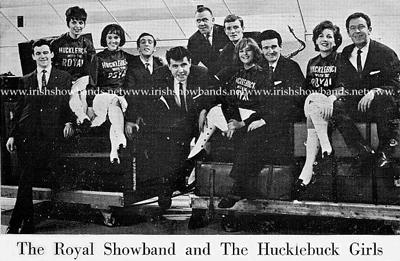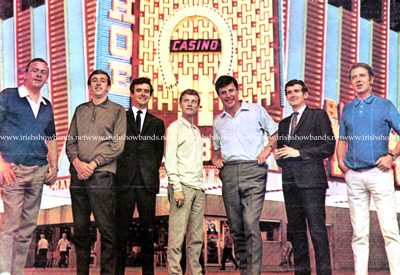|
Their long-time manager T.J.
Byrne parted company with the band in 1967 and took over the reins of
a Northern Ireland band called The College Boys. Connie Lynch
became manager of The Royal. They continued to play both in Las
Vegas and in Ireland until 1971, when Brendan and Tom left to form
The Big 8. Replacements were quickly signed, with Lee Lynch,
Barbara Dixon and Derrick Mehaffey
at various times fronting
The New Royal. However, the flame seemingly had gone out, and a
once-great band more or less faded away, leaving us all with so many
magical memories.
Tom Dunphy died
tragically in a car crash in 1975, just two days after three members of
The Miami Showband were murdered near Newry. Brendan Bowyer
continues to record and perform and some other members still play music in
Waterford. |
... |
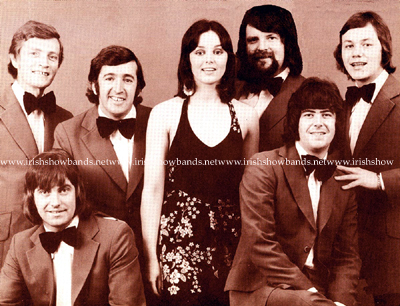 |
